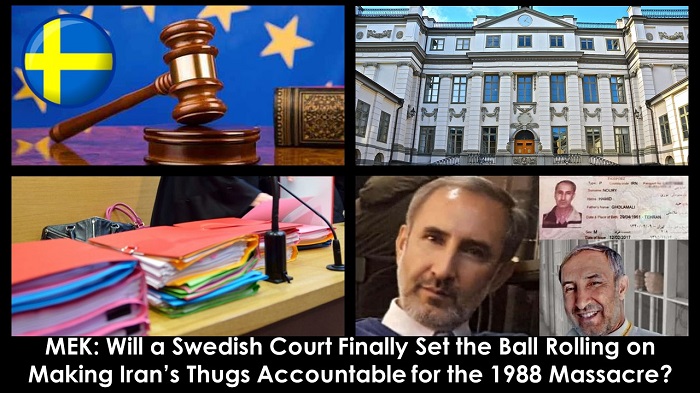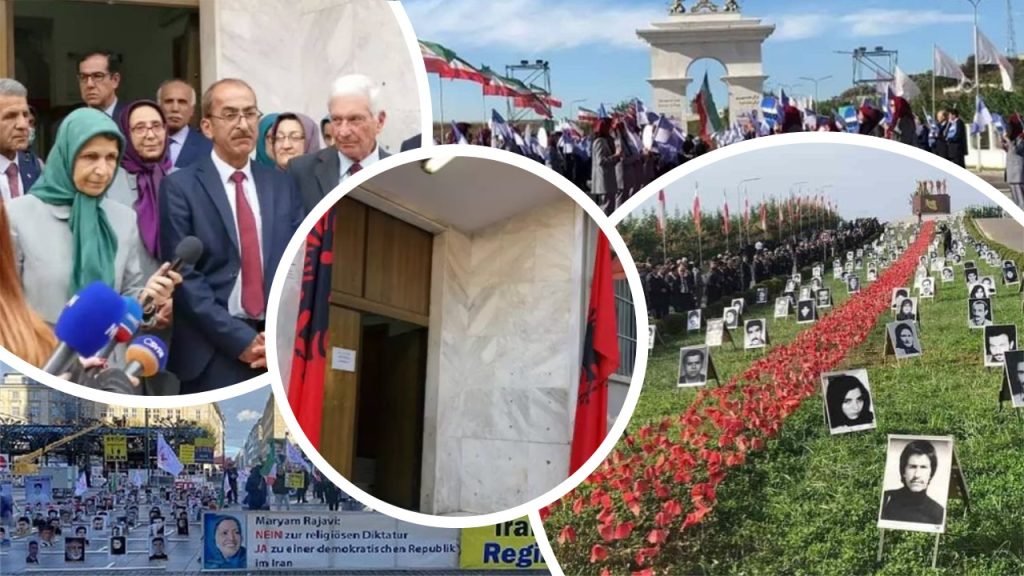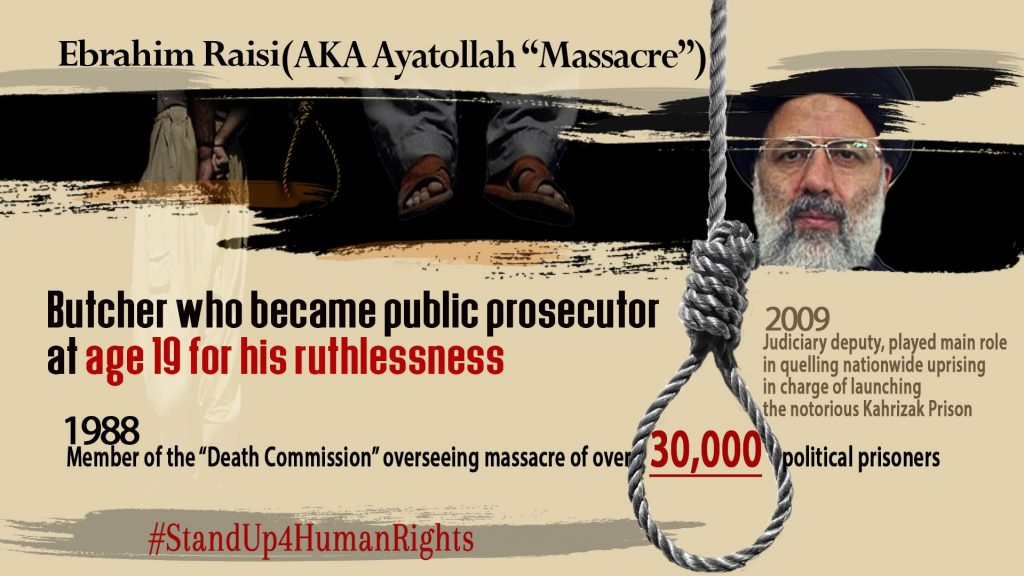
(NCRI) and (PMOI / MEK Iran): Publication of indictment and documents in the Case of Hamid Noury, Iranian Regime Henchman, by Swedish Prosecutor Authority.
The trial of Hamid Noury, an Iranian prison official accused of torturing inmates in the Gohardasht prison and participating in the 1988 massacre, began its 35th session on Wednesday. Noury was apprehended by Swedish police while visiting the country, and he is now facing charges in a courtroom where many of his victims are testifying about how he and other regime officials tortured and killed prisoners.
The kind of tortures are used in mullah Jail
Mohammad Zand, a former political prisoner who spent eleven years in Iran’s terrible prisons, testified at the hearing. Zand was in Gohardasht prison during the 1988 massacre.
“I have brought with me a sample of the cable used to torture prisoners. Most of them used thick versions. The prisoners were laid on a bed. Their hands were tied to the front and their feet to the back of the bed, and even the two big toes were tied together to make sure both feet were being whipped at the same time.
When the prisoner was laid on the bed, one person would sit on their stomach and another would place a handkerchief in the prisoner’s mouth. Another individual would start whipping the prisoner’s feet. I’m asking the judges and lawyers here to use this cable and strike a small blow to their own hands to then feel how painful 100, 200, or even 1,000 blows would feel.

(PMOI / MEK Iran) and (NCRI): Several witnesses to the 1988 massacre and families of the victims gathered in front of the Durres court and spoke to the press about the Iranian regime’s crimes against MEK members and dissidents while the trial was underway.
Zand also spoke of his brother’s execution
Our feet would be swollen and bleeding, and in such circumstances, the prison authorities would tell us to jump up and down to decrease our feet’ inflation. Afterward, they would start whipping us again. These were the tortures that all inmates endured in the regime’s prisons,” Zand said.
Mohammad Zand explained when he first saw Hamid Noury: “It was in early 1987. I went to the prison’s judiciary office to have my verdict changed. They took me to a room that was later used for the ‘Death Commission.’ It was there [Noury] who changed my verdict. I signed and Nasserian was sitting in the room. This is how I understood their roles. I realized Nasserian was the prison’s judiciary official and Hamid Noury was his chief of staff,” Zand remarked.
Zand also spoke of his time in prison during the massacre, his brother’s execution, and how the authorities treated his family when they learned of his death.

(PMOI / MEK Iran) and (NCRI): Zand also spoke of his time in prison during the massacre, his brother’s execution, and how the authorities treated his family when they learned of his death.
Gathering of MEK sympathizers in Stockholm
Several witnesses to the 1988 massacre and families of the victims gathered in front of the Durres court and spoke to the press about the Iranian regime’s crimes against the People’s Mojahedin of Iran (PMOI / MEK Iran) and dissidents while the trial was underway.
Meanwhile, a huge gathering of MEK sympathizers attended a protest march in front of the court in Stockholm, where Noury and his lawyers are attending the trial via video conference. Demonstrators want a broader tribunal that includes other perpetrators and organizers of the 1988 massacre, such as regime president Ebrahim Raisi.

(PMOI / MEK Iran) and (NCRI): Protest-rally-by-Iranian-Resistance-supporters-in-Stockholm-Sweden
The massacre in 1988 was called a war against humanity
During the summer of 1988, the regime executed over 30,000 political prisoners across Iran, the majority of whom were MEK members and supporters. The purge was authorized by Ruhollah Khomeini, the regime’s supreme leader, in an edict that stated categorically that anyone supporting the MEK is an enemy of God who deserved to be executed. The massacre in 1988 has been called a war crime and a crime against humanity. It is also referred to as “genocide” by legal experts, and it should be investigated by international tribunals.

(NCRI) and (PMOI / MEK Iran): Ebrahim Raisi, a mass murderer (Henchman) of MEK activists and political prisoners appointed as head of the Iranian regime’s Judiciary.
MEK Iran (follow us on Twitter and Facebook)
and follow Maryam Rajavi’s on her site 
and follow NCRI (Twitter & Facebook) and People’s Mojahedin Organization of Iran – MEK IRAN – YouTube
